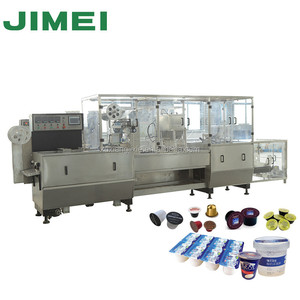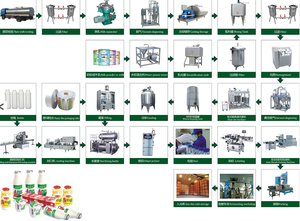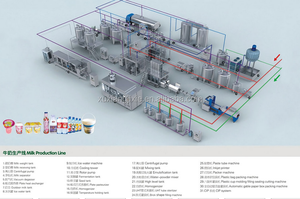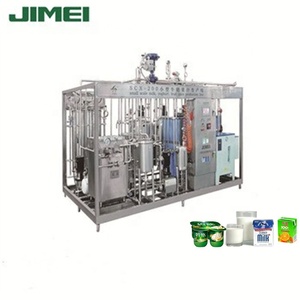(3012 products available)
































































































































As one of the most nutritious food products available, fresh cow milk is an important part of the food industry. Malaysia has both local fresh milk production and importation from other countries. Depending on the purpose, milk is processed differently.
Pasteurized fresh cow milk
This type of milk is mostly found in supermarkets and consumed directly. It has undergone pasteurization, where it is heated to a specific temperature for a certain period to kill harmful bacteria. Pasteurized fresh cow milk is also available in different fat content varieties, such as skim, low-fat, and whole milk. The latter contains all of its possible fat content. Skim milk retains none of its original fat, while low-fat milk still has some. Whole pasteurized fresh cow milk is placed in an aseptic container and is typically sold without an expiration date. Compared to regularly pasteurized fresh cow milk, ultra-pasteurized fresh cow milk is heated to higher temperatures, thus giving it a longer shelf life.
Pros and Cons:
The main advantage of pasteurized fresh cow milk is that it can be consumed right away. However, some people believe that pasteurized fresh cow milk is less nutritious because some nutrients are lost during the heating process.
Raw fresh cow milk
Raw fresh cow milk has not been pasteurized or homogenized, meaning that it has not been heated to kill bacteria or had its fat molecules distributed evenly throughout the milk. As a result, raw fresh cow milk maintains its natural fatty composition. However, in Malaysia, selling raw fresh cow milk is illegal due to safety concerns. The consumption of raw fresh cow milk is infectious and poses a high risk of illness.
Pros and Cons:
Raw fresh cow milk's most significant advantage is that all the natural nutrients and qualities are kept. Some people also say it tastes better than pasteurized fresh cow milk. As mentioned earlier, raw fresh cow milk isn't processed, so it's more susceptible to bacteria and germs, which is a danger to people's health.
Flavored fresh cow milk
Flavored fresh cow milk is opened whole fresh cow milk that has been infused with artificial or natural flavors, such as chocolate or strawberry. Some brands sell sweetened fresh cow milk products with added sugar, which can raise health concerns for consumers.
Pros and Cons:
Flavored fresh cow milk's main advantage is that it appeals to people who dislike the taste of regular fresh cow milk. The biggest disadvantage is the added sugar content that can increase the chances of developing health issues like diabetes, obesity, or heart disease.
Farmers who sell cow milk Malaysia know that cow milk is nutritious because it contains proteins and calcium that are essential for human body. Here are some crucial specifications and facts about fresh cow milk that business owners should know.
Cow milk requires routine maintenance to keep it fresh and wholesome. Here are a few maintenance suggestions for fresh cow milk:
Retail industry:
Fresh milk is a staple for grocery stores, convenience shops, supermarkets, online grocers, and other retailers within the food industry. Dairy wholesalers deliver fresh milk to retailers who sell it to end consumers across regions.
Food and beverage industry:
Fresh milk is an essential ingredient in the food and beverage industry. It's used to make a variety of food products, including cheese, ice cream, yogurt, butter, chocolate, desserts, breakfast cereals, and a lot more. Artisanal workshops also use fresh milk to create distinct local flavors and products. Milk is widely used in restaurants, bakeries, coffee shops, smoothie bars, and other food service establishments as well. Fresh milk serves as a base for lattes, cappuccinos, milkshakes, pancakes, pastries, sauces, marinades, and several other delicacies.
Hospitality industry:
Hotels, motels, and hostels are also significant users of fresh milk. They serve it for breakfast to guests who stay at their facilities, and they're often looking for fresh milk suppliers to partner with them. On top of that, fresh milk is used to prepare several dishes and specialized meals catered to guests.
Child nutrition industry:
Schools, daycares, and educational institutions need fresh milk to meet students' dietary needs. Young children, adolescents, and teenagers consume fresh milk as an essential vitamin and nutrient source. Dairy farms and creameries often partner with educational institutions to supply them with fresh milk.
Health and nutrition industry:
Fitness centers, gyms, health clinics, nursing homes, and other healthcare facilities consume fresh milk, especially fortified with additional vitamins and minerals. Dairy product suppliers often partner with these institutions to ensure continuous fresh milk supply.
When shopping for fresh cow milk, one must carefully consider certain factors to get the finest milk. Checking the packaging is an excellent place to start. Customers should confirm that the carton or bottle is sealed because any exposed milk is subjected to bacterial contamination from the air. Also, they should check the packaging date, which is usually included in the container. Purchasing milk a few days before its expiration date is sensible; otherwise, the customer risks throwing away the milk.
Apart from inspecting the packaging, customers should look for foods with minimal to no additives and preservatives. Unlike flavored milk, which contains various additives, fresh white milk should be as pure as possible. Moreover, customers should strive to buy milk from cows fed a grass-based diet. Milk produced by cows fed such diets is more nutritious. More importantly, customers should purchase milk from reputable brands. When brands invest in their names, they strive for excellence in every bottle and carton they produce.
Customers should also choose fresh milk tailored to their nutritional needs. While whole milk is ideal for families with children, low-fat and skim milk options work just as well for adults. Customers should purchase milk that has been subjected to the highest bacterial safety standards. Thorough pasteurization and stringent testing ensure milk is safe for consumption. Additionally, customers should opt for fresh milk that is store-refrigerated. Refrigeration prevents bacterial growth, and as such, the products are safer for consumption.
Ultimately, customers should consider the farm's milking practices and determine whether they practice sanitary procedures that minimize contamination. More importantly, customers should strive to buy fresh milk that supports local farmers. Local farmers are close to the supply chain, and as such, customers can easily trace the source of their milk. Finally, individuals with lactose intolerance or other allergies should look for fresh milk fortified with additional enzymes to aid digestion and absorption.
Q1: How is cow's fresh milk different from processed milk?
A1: Fresh cow milk tastes better and contains more nutrients. Also, it is more natural than processed milk since no chemicals are added to preserve or enhance it.
Q2: Is fresh cow milk safe to drink?
A2: Yes, it is safe as long as it comes from a healthy cow. Nonetheless, people with lactose intolerance should not drink it.
Q3: Does fresh cow milk contain lactose?
A3: Yes, it does. Essentially, fresh cow milk consists of several components, including fat, proteins, vitamins, and lactose.
Q4: What nutrients does fresh cow milk have?
A4: Fresh cow milk is rich in calcium, vitamin D, potassium, and proteins.